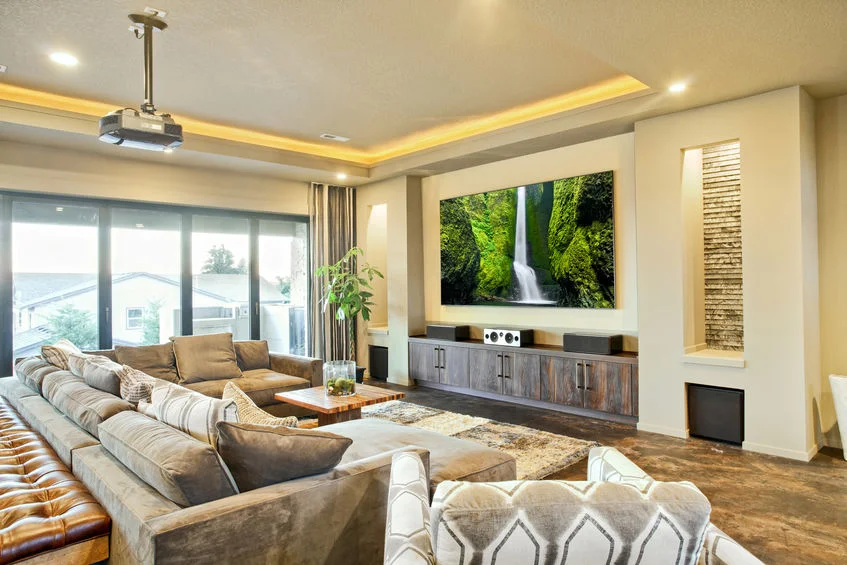
How a projector and projector screen makes an ideal choice for movie viewing experience at home.
Not so long time ago, the televisions were meant for only TV shows while the cinema theatres were for movies, but with modern technology and a new rise in OTT platforms, there has been an increased demand for home theatre viewing experience.
The projector and the projector screen setup plays a vital role in making the home theatre experience worthwhile. Let’s look at the benefits of how the combination of projector and projector screen is essential to create the movie viewing experience at home engaging.
Improved picture quality
The biggest benefit of having a projector and a projector screen is that it gives you more clarity than you’d get with a bare wall. A perfectly smooth wall does the job, but any minor imperfections could harm your projected image.
Even if you have a perfectly smooth, white wall, you still might want to get a projector screen. Most screens have fixed frames which help frame your movies and TV shows.
To check our range of fixed frames click here: https://bit.ly/32hiaFs
A projector screen also gives you a bit more control over how much light gets reflected:
The ambient light rejecting technology in the projector screen helps ambient light from ruining your image.
The gain advantage
Projector screens are rated for their gain, the amount of reflectivity that’s manufactured to be uniform across the screen’s fabric.
Matte or semi-gloss painted walls tend to absorb a fair amount of projected light and will generally not transmit all the contrast that you’d see from a projected image on a projector screen. Gloss painted walls are very prone to hot-spotting, reflecting the projecting image which causes glare.
To get the most out of a home theatre room, investing in a good quality projector screen with a proper gain can greatly enhance your experience.
Comfortable on eyes
For your eyes, the benefits of the home theatre package in this regard are twice. Anyone who has had an eye test already knows that it is always easier to read capital letters than small ones, even if you have the best possible picture.
The distance between the viewer and the screen has an impact on eye comfort as well. Eyestrain, for example, is caused when trying to focus on images that are too small for your eyes to look at comfortably. Since projector users can project larger images, eye strain becomes less common.
Texture
The issue with the blank wall is that it is not as flat as it appears to be. If you feel the wall with your hands it is most likely filled with bumps, crevices and imperfections. The bumps can lead to tiny shadows on the surface of the picture; it can reduce the bright and crisp final image when multiplied across the whole wall.
With a low-quality image, it will not make any difference. But if you are using a 4K projector, the tiny little bumps are unavoidable.
Projector screens come with a multi-layer surface and superior coating that gives them a smoothest possible surface. It means less visual noise on the surface, which in turn means a sharper focus enabling you to open your projector’s maximum potential.
Conclusion
In the end, it all boils down to what features are more important to you. How would you like to make your home theatre experience better by adding performance-driven sound systems, creating a proper dark environment, adding comfortable seatings, etc.
Home theatre experience is not just about a projector screen or a projector, but it’s a complete package that makes the experience unique and special. To explore our range of projector screens visit: Our Products
- Date - July 17, 2020